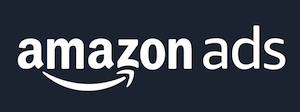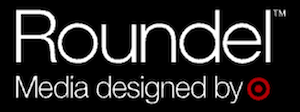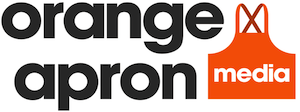
Retail media is on track to hit $106 billion by 2027, with giants like Amazon and Walmart dominating, while innovators like Instacart, Kroger, and Home Depot carve out specialized niches.
In 2023, eMarketer called retail media the third — and likely the biggest — wave in digital media. So far, the ad revenue data hasn’t proved the research company wrong. Spending has grown steadily and will top $106 billion by 2027.
2025 will be an interesting year for retail media, especially in the groceries category. In 2024, 138 million people shopped for groceries online, spending $257 billion. Saving time is a key driver, but so is a wish to avoid impulse buys and compare prices. The latter two may motivate an even greater percentage of consumers to buy more of their groceries online, especially as fear mounts that new tariffs will increase food costs. This all bodes well for retail media networks and advertising clients who want to reach them.
While Amazon, Walmart, and Target dominate retail media through sheer scale, three emerging players — Instacart, Kroger, and Home Depot — are carving out valuable niches through specialization and innovation.
#1: Amazon Advertising: King of Cross-Channel Marketing
It’s no surprise that Amazon Advertising dominates the American retail media space, grabbing 75% of the marketer’s dollars. If you’re a marketer, it’s hard to go wrong with the platform’s features: diverse ad formats and access to a ton of first-party shopping data that you can apply anytime a consumer is in the Amazon ecosystem.
Amazon’s vast empire gives marketers unique opportunities to create brand awareness and nurture prospects into regular customers. Amazon Advertising lets marketers deploy data and access inventory across Amazon-owned properties, including Amazon.com, Fire TV, Audible, Twitch, and third-party websites and apps. This cross-platform reach is catnip to advertisers who want to engage with customers throughout their entire browsing journey.
While Amazon leads in overall retail sales, it’s not the top grocery retailer by sales. Walmart holds that position.
#2: Walmart: The Value Play
With 37 million daily shoppers and 37% of US online grocery sales in Q2 2024, Walmart’s retail media network is a goldmine for CPG brands. The platform offers advertisers competitive cost-per-click rates compared to Amazon, though this advantage may fade as inflation drives more brands to target Walmart’s value-conscious shoppers.
While not matching Amazon’s reach, Walmart’s omnichannel offerings are strong. Its self-service Ad Center lets brands run display ads across Walmart properties, while partnerships with TikTok, Meta, and Roku extend campaigns beyond the retailer’s ecosystem. The Walmart DSP brings it all together, and is projected to capture 6.8% of US retail media spend in 2024.
#3: Target Roundel: Connecting the Dots
For brands looking for first-party data on loyal customers as opposed to one-off purchasers, Roundel offers compelling benefits. The retailer integrated the platform into the Target Circle Loyalty program, which provides personalized promotions to its 100 million members. Its Circle Promotions offers targeted discounts through its mobile app, letting brands target loyalty members on their phones while they’re in-store.
“The work starts with knowing our guests really well. We stay closely tied to all the ways people interact with Target — in stores, on our website, in our app, and on social media,” Sharon Travis, president of Roundel, said in a company blog post. “For example, we know two-thirds of guests use the Target app or visit Target.com while shopping in-store. These types of insights help us understand what guests want out of their Target run, which is where we step in to connect the dots between what brands are hoping to sell and what our guests are looking to buy.”
#4: Instacart: Multi-Retailer Innovation
Instacart is emerging as a new powerhouse in grocery delivery and retail media advertising. Popular among consumers who want convenience and flexibility — think young families and busy professionals — it’s also attracting brands eager to connect with these audiences.
Instacart reported nearly $8.2 billion in sales in August, a 10% year-over-year increase. Its retail media network grew even more substantially, climbing 17% to $228 million.
While newer to retail media than Amazon and Walmart, Instacart’s specialization in grocery delivery and partnerships with multiple retailers give it a unique advantage. Instacart offers CPG advertisers a broad reach by integrating with numerous grocery retailers. Its use of real-time purchase data also allows for precise audience targeting and performance tracking.
Through partnerships with Google and real-time purchase insights, Instacart allows brands to influence consumer decisions with in-app featured products and targeted promotions. Ads appear seamlessly within the shopping experience, helping brands guide real-time purchasing behavior.
#5: Kroger: Precision in Promotions
In 2023, Kroger introduced its retail media network, Kroger Precision Marketing (KPM). This self-serve platform lets advertisers tap into Kroger customer loyalty data, ML, and data science to create precise shopper segments to target for their products. That data is updated daily and gets richer every time a consumer shops. Thanks to this precision, revenues were projected to be 20% in 2024.
KPM also offers full omnichannel advertising capabilities so that advertisers can reach consumers “at different touch points along their path to purchase.”
One of Kroger’s more successful programs is its digital coupons. Consumers can choose the discounts they want and load them onto their loyalty card to redeem at the register. This personalization improves the loyalty data for advertisers and provides a better experience for shoppers. In fact, Kroger says it has seen an 18% boost in digitally engaged households (i.e., customers who interact with Kroger both online and in-store).
#6: Home Depot: DIY Data Revolution
Home Depot’s retail media platform targets a unique audience segment: high-intent customers actively planning or working on home improvement projects. By focusing on this specialized demographic of homeowners, contractors, and DIY enthusiasts, Home Depot creates advertising opportunities that general retail media networks can’t match.
The platform’s project-based approach lets brands align campaigns with specific home improvement categories, from bathroom renovations to landscaping. Through partnerships with Meta, Google, and Pinterest, advertisers can retarget these engaged shoppers across social media and search, while sponsorship opportunities on HomeDepot.com capture them at the point of purchase. While Home Depot doesn’t publicly share ad revenue figures, this laser focus on home improvement creates a valuable niche in the retail media landscape.
As retail media spending heads toward $106 billion by 2027, these networks are evolving beyond simple advertising platforms. The leaders — Amazon, Walmart, and Target — compete on scale and cross-channel reach, while Instacart, Kroger, and Home Depot win through specialization. For advertisers, this evolution means more options for precision targeting, whether they’re seeking mass-market reach or aiming for specific shopping moments and consumer segments.





